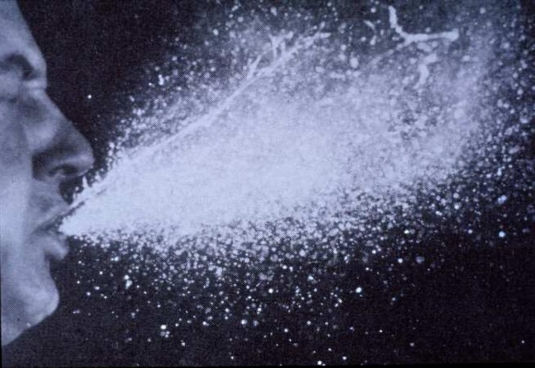Covid-19 Vaccines and Viral Shedding
- MyBody MyRisk

- May 1, 2021
- 2 min read
Updated: May 8, 2021
What is viral shedding?
Viral shedding refers to the expulsion and release of virus progeny following successful reproduction during a host-cell infection.

How does the COVID-19 wild virus shed?
2019-nCoV makes use of a densely glycosylated spike (S) protein to gain entry into host cells. The S protein is a trimeric class I fusion protein that exists in a metastable prefusion conformation that undergoes a substantial structural rearrangement to fuse the viral membrane with the host cell membrane. This process is triggered when the S1 subunit binds to a host cell receptor. Receptor binding destabilizes the prefusion trimer, resulting in shedding of the S1 subunit 1 and transition of the S2 subunit to a stable postfusion conformation.
What is shed?
Infectious RNA particles

None of the Phase 1/2/3 trials include testing of any COVID-19 Vaccine set out to prove or disprove viral shedding can occur
The below published research article discusses the theoretical cellular processes undertaken by the body that mimic the natural disease suggesting that shedding is likely.
Infirmation regarding Oxford AstraZeneca COVID-19 vaccine shedding
Excerpts:
While this observation that the majority of cells infected with ChAdOx1 2019-nCoV present native-like spikes on the cell surface, it is interesting to note that a population may shed the S1 subunit. Whether this is a beneficial or detrimental feature with respect to the elicitation of immune responses during vaccination is unknown. Shedding of S1 subunits from viruses occurs during native infection, and the ChAdOx1 nCoV-19-derived S proteins mimic this native feature of the viral spike.
Overall, this study provides holistic biophysical scrutiny of the spike protein that is produced upon vaccination with ChAdOx1 nCoV-19. Importantly, we reveal the native-like mimicry of SARS-CoV-2 S protein’s receptor binding functionality, prefusion structure, and processing of glycan modifications. While there is some evidence of S1 subunit shedding, as observed on the actual SARS-CoV-2 virus, the impact of the catabolism of the trimeric spike on immunogenicity and vaccine efficacy is yet to be determined.

What about mRNA vaccines?
Unknown at this stage.
AstraZeneca vaccine demonstrates that synthesized COVID-19 spike proteins can be shed.
Given the human body has the machinery to replicate synthesized viral particles, and the Pfizer trial 1 report demonstrates amplification and binding of the COVID-19 spike protein, doesn't it stand to reason that the Pfizer vaccine has the ability to shed RNA in urine, faeces, and exhaled.breath.
Other studies
Individuals vaccinated against Influenza (inactivated vaccine), when infected with symtomatic influenza, shed more live viral rna particles when exhaling than unvaccinated.
What are the implications?
1. Synthesized viral proteins that enter the human body infect human cells (through vaccines) cause the body to produce infectious viral proteins that mimic the actual disease
2. Viral particles may be 'Not live' or 'Inactivated' or 'synthetic' upon entry to the human body, but the molecules and proteins formula are combined within the vaccine, mimicing the LIVE VIRUS and are replicated by the human body as LIVE VIRAL PARTICLES
3. The human body activates non-live and inactivated viruses when inactivated particles are presented to human cells alongside molecules recogised by the human body
INACTIVATED AND ATTENUATED LIVE AND NON-LIVE VACCINES ENHANCE AND INCREASE DISEASE SPREAD ONCE ACTIVATED, REPLICATED, AND AMPLIFIED BY THE HUMAN BODY





Comments